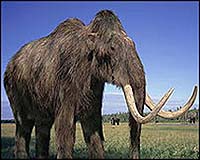| . |  |
. |
West Lafayette IN (SPX) Jul 10, 2009 Catching adult eagles for research purposes is no easy task, but a Purdue University researcher has found a way around the problem, and, in the process, gathered even more information about the birds without ever laying a hand on one. "Many birds are small, easy to catch and abundant," said Andrew DeWoody, associate professor of forestry and natural resources. "With eagles, the effort can be 100 to 1,000 times greater than catching chickadees." Eagles can be hard to find, they often require live bait to attract and, with sharp talons and beaks capable of snapping off human fingers, they pose a risk to their would-be captors. Instead of catching eagles, DeWoody collects their feathers and uses the small amount of DNA in them to create a tag that corresponds to a particular bird. Those tags can be used to determine population, parentage, roosting patterns and sex ratio. "In an afternoon, you can go out and pick up hundreds of feathers," DeWoody said, "As field work goes, it's about as easy as it gets." DeWoody's method is described in a chapter of the Handbook of Nature Conservation: Global and Economic Issues, which was released this week. The chapter is a compilation of his research on the topic. Most birds are studied by catching them in nets and attaching tracking devices. Researchers can then follow the birds and use radio technology to triangulate their locations. Eagles and other large birds present several challenges, however, even beyond catching them. "Eagles will literally fly hundreds of miles in two days," DeWoody said. "They fly in areas where you can't track them in a pickup truck." Capturing a bird as large as an eagle can often be traumatic to the animal. "They're wild animals that don't want to be caught," DeWoody said. "They can get hurt as well. Using feathers, you avoid all that." And costs can be as high as $5,000 for the tracking technology that researchers must attach to eagles, a prohibitive cost if studying more than a few birds. DeWoody's studies were done in Kazakhstan with imperial eagles, a top predator of international concern because its population is declining. The feathers give a good picture of recent eagle habits because they do not survive long in Kazakhstan's winters. Any feathers collected after the winter thaw, then, had to have been recently dropped. In one study, DeWoody's team found that an area thought to have about 40 juvenile eagles living in it based on human observation actually had closer to 300. The work also helped researchers understand more about the roosting habits of some eagles that use a nest for months at a time versus others who float around from roost to roost. Another study showed that DNA could be used to distinguish eagle species from one another, and that imperial, golden and white-tailed eagles often utilized the same roosts at the same time. The National Geographic Society and the National Birds of Prey Trust funded DeWoody's research. Share This Article With Planet Earth
Related Links Purdue University Darwin Today At TerraDaily.com
 Steppe change: Mammoths roamed southern Spain
Steppe change: Mammoths roamed southern SpainParis (AFP) July 9, 2009 Remains of woolly mammoths have been found in southern Spain, proving that the chilly grip of the last Ice Age extended farther south than thought, palaeontologists said on Thursday. The fossilised remains of at least four mature male mammoths (Mammuthus primigenius) were found in a peat bog near the town of Padul in the Granada Basin, they said. Carbon-dating estimates the animals lived ... read more |
|
| The content herein, unless otherwise known to be public domain, are Copyright 1995-2009 - SpaceDaily. AFP and UPI Wire Stories are copyright Agence France-Presse and United Press International. ESA Portal Reports are copyright European Space Agency. All NASA sourced material is public domain. Additional copyrights may apply in whole or part to other bona fide parties. Advertising does not imply endorsement,agreement or approval of any opinions, statements or information provided by SpaceDaily on any Web page published or hosted by SpaceDaily. Privacy Statement |